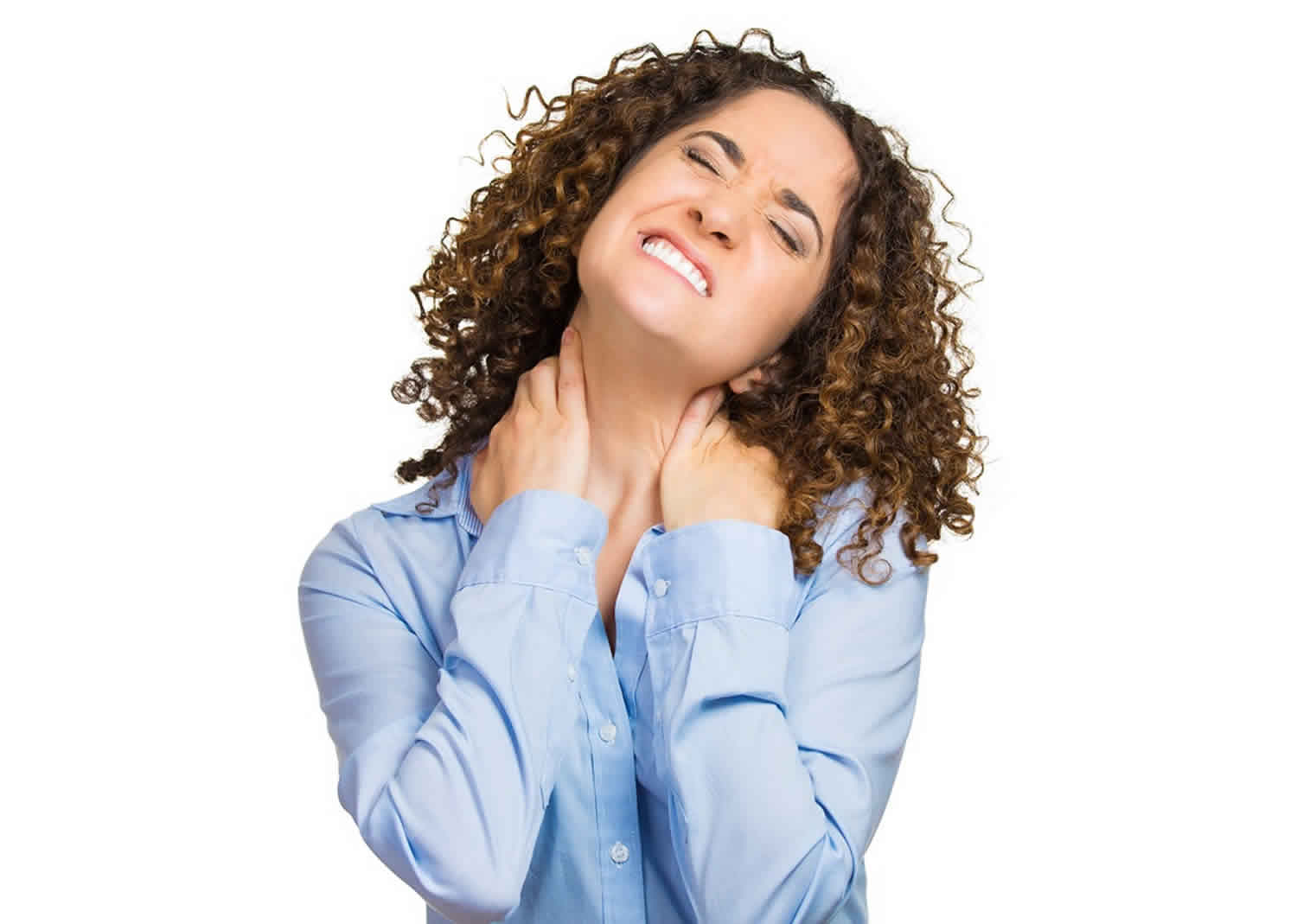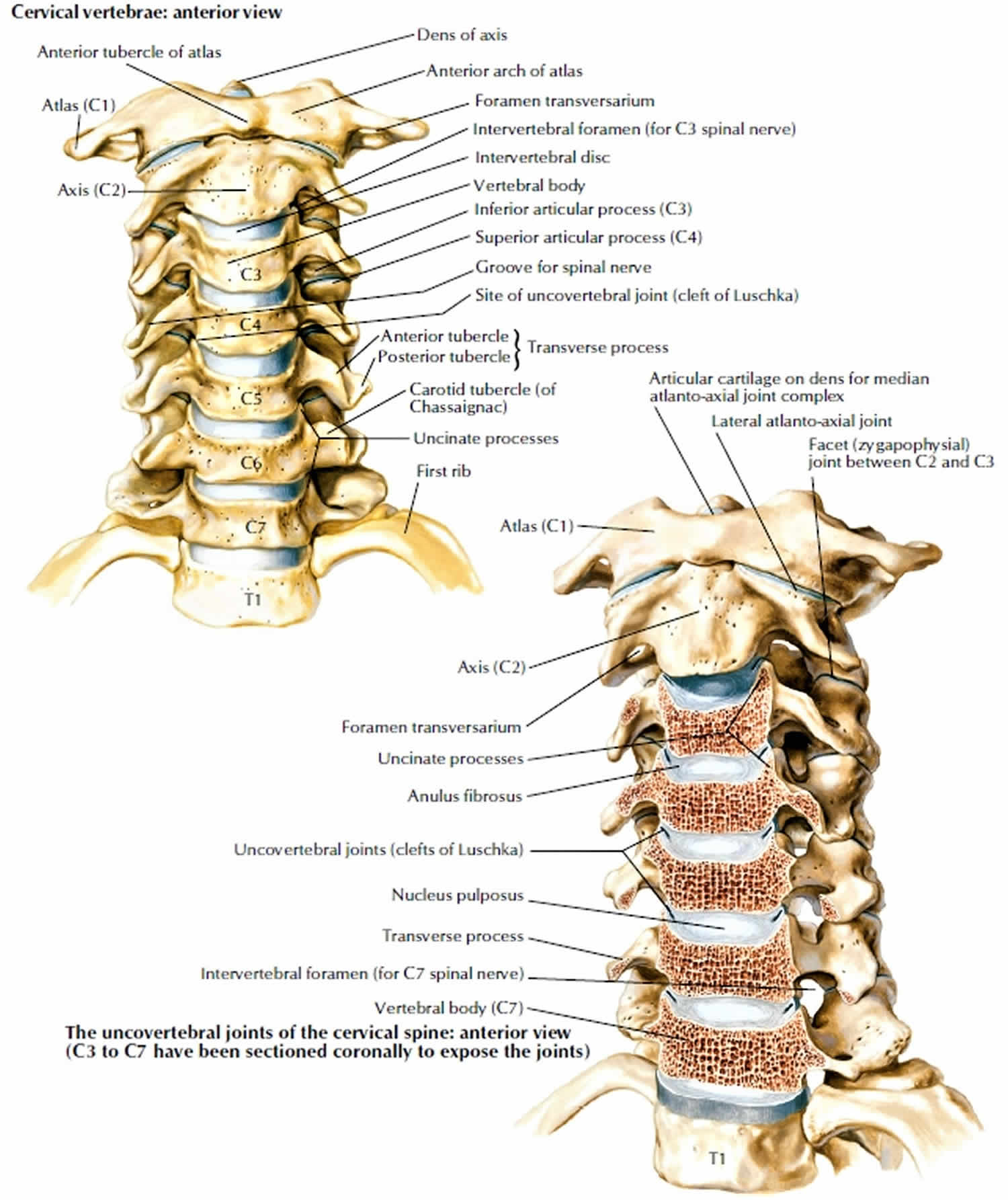What is neck sprain
There are seven bones of the spinal column in your neck called the cervical vertebrae, that are connected to each other by ligaments and muscles–strong bands of tissue that act like thick rubber bands. A neck sprain (stretch) or tear can occur in one or more of these soft tissues when a sudden movement, such as a motor vehicle collision or a hard fall, causes the neck to bend to an extreme position.
A common cause of neck sprain is muscle strain or tension.
Most often, everyday activities are to blame. Such activities include:
- Bending over a desk for hours
- Having poor posture while watching TV or reading
- Having your computer monitor positioned too high or too low
- Sleeping in an uncomfortable position
- Twisting and turning your neck in a jarring manner while exercising
- Lifting things too quickly or with poor posture
Accidents or falls can cause severe neck injuries, such as vertebral fractures, whiplash, blood vessel injury, and even paralysis.
To diagnose a neck sprain, your doctor will perform a comprehensive physical examination. During the physical examination, your doctor will ask you how the injury occurred, measure the range of motion of your neck, and check for any point tenderness.
In order to look closely at the bones in your neck, your doctor may request x-rays. This evaluation will help your doctor rule out or identify other sources of neck pain, such as spinal fractures, dislocations, arthritis, and other serious conditions.
What is neck sprain recovery time?
Most symptoms of neck sprain will go away in 4 to 6 weeks. However, severe injuries, may take longer to heal completely.
Figure 1. Neck bones
Figure 2. Neck ligaments
Neck sprain symptoms
A person with a neck sprain may experience a wide range of possible symptoms.
- Pain, especially in the back of the neck, that worsens with movement
- Pain that peaks a day or so after the injury, instead of immediately
- Muscle spasms and pain in the upper shoulder
- Headache in the back of the head
- Sore throat
- Increased irritability, fatigue, difficulty sleeping, and difficulty concentrating
- Numbness in the arm or hand
- Neck stiffness or decreased range of motion (side to side, up and down, circular)
- Tingling or weakness in the arms
Neck sprain treatment
All sprains or strains, no matter where they are located in the body, are treated in a similar manner. Neck sprains, like other sprains, will usually heal gradually, given time and appropriate treatment. You may have to wear a soft collar around your neck to help support the head and relieve pressure on the ligaments so they have time to heal.
Pain relievers such as aspirin or ibuprofen can help reduce the pain and any swelling. Muscle relaxants can help ease spasms. You can apply an ice pack for 15 to 30 minutes at a time, several times a day for the first 2 or 3 days after the injury. This will help reduce inflammation and discomfort. Although heat, particularly moist heat, can help loosen cramped muscles, it should not be applied too quickly.
Other treatment options include:
- Massaging the tender area
- Ultrasound
- Cervical (neck) traction
- Aerobic and isometric exercise.
Neck exercises
There are some simple exercises you can do to help strengthen the muscles in your neck and keep your neck mobile.
Try gently nodding 15 times. Bring your chin down to your chest as far as is comfortable, and up towards the ceiling as far as is comfortable.
Turn your head slowly from left to right 15 times. You should only turn your head as far as feels comfortable.
Tilt your head as if you are trying to touch your left shoulder with your left ear, and the same for the right 15 times. Again, only tilt your head as far as is comfortable for you. Don’t move your shoulders up to meet your ears.
Cervical flexion
Increasing neck movement by moving the head forwards in sitting.
Cervical side-flexion
Active neck movement bending side to side (side-flexion) in sitting position
Cervical rotation
Active neck movement by turning side to side (rotation) in sitting position.
Chin tucks (cervical retraction)
Strengthening of the stabilising neck muscles by drawing the chin in gently in sitting position.
Figure 3. Neck exercises for neck pain including pinched nerve in the neck
[Source 1]And to reduce your chances of future episodes of neck pain, you can:
- Improve your posture with gentle stretching exercises, such as those popular in activities such as yoga or Pilates.
- Arrange your work space so that your desk and chair are suitable for your needs. Ask for a footrest if you find that your knees and hips are not level and your feet do not sit flat on the ground. You may also need to move items that you use regularly closer to you, so that you don’t twist or reach too far to find items you need.
- Support your neck while sleeping with a support pillow, and sleep with just one pillow.
- Make sure your neck is supported in the car by adjusting the headrest so that it is at least at eye level and as close to the back of your head as possible.








